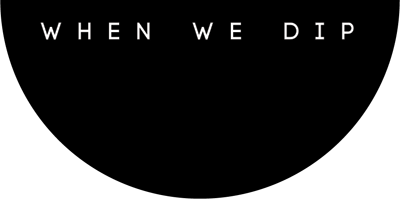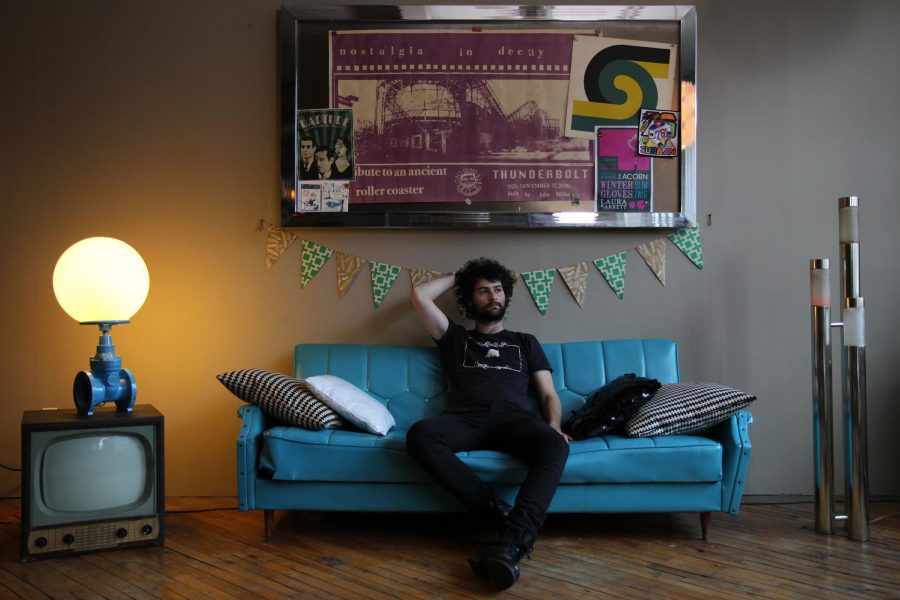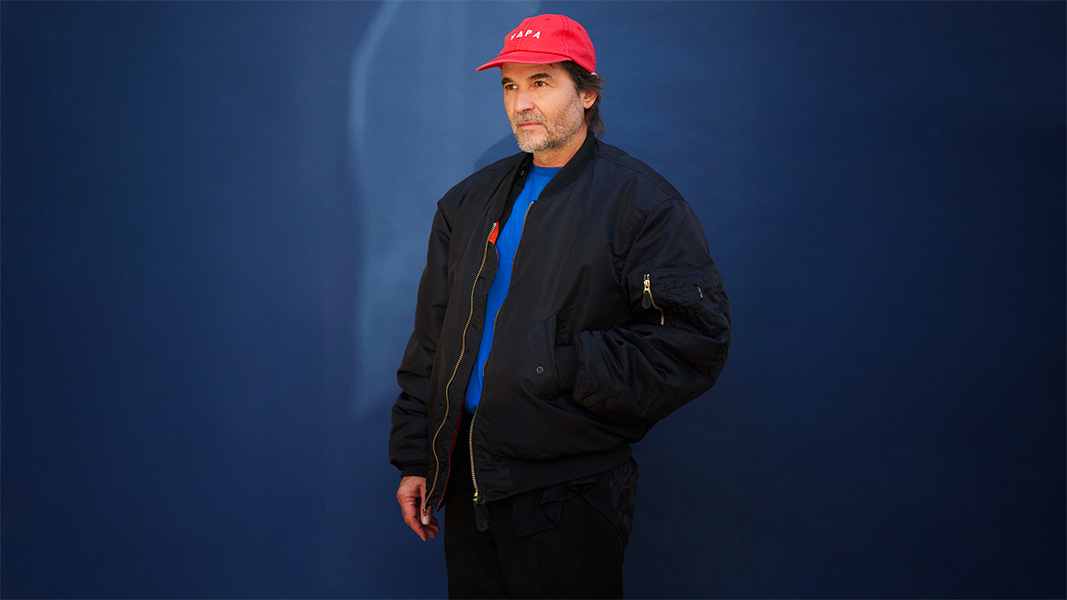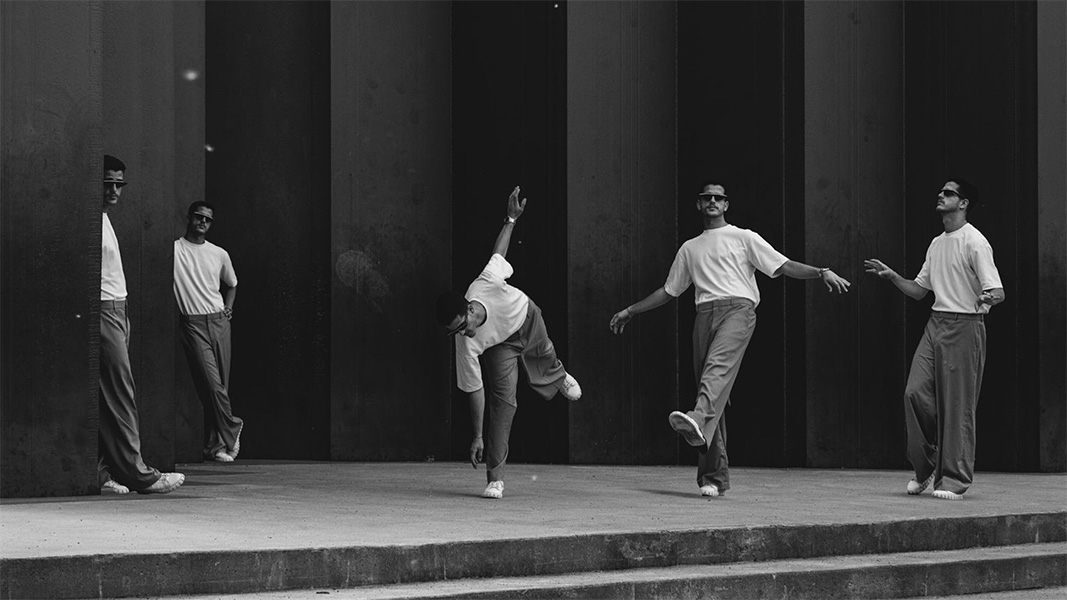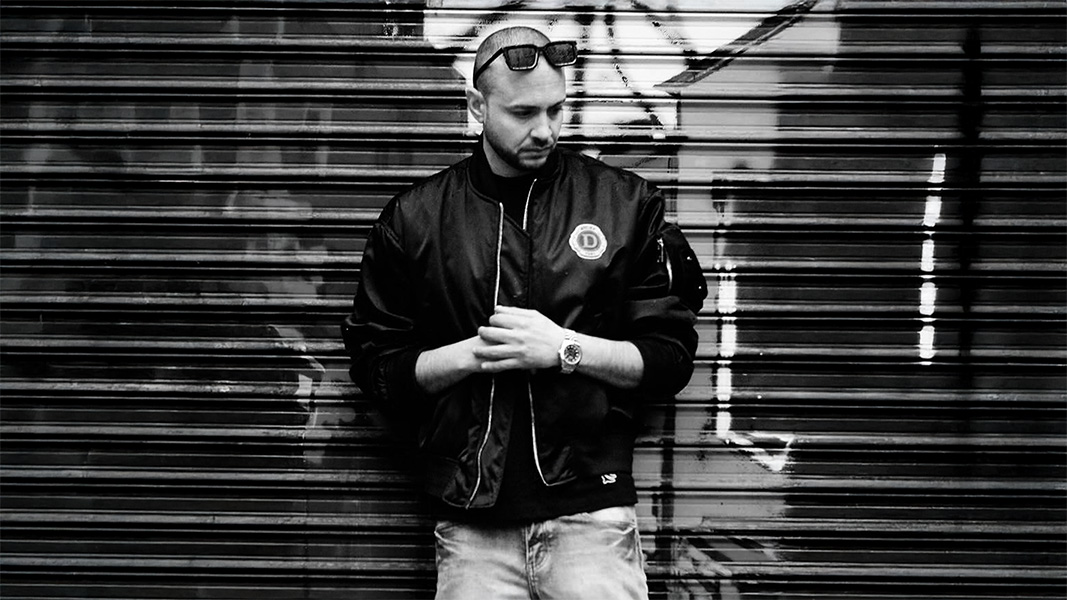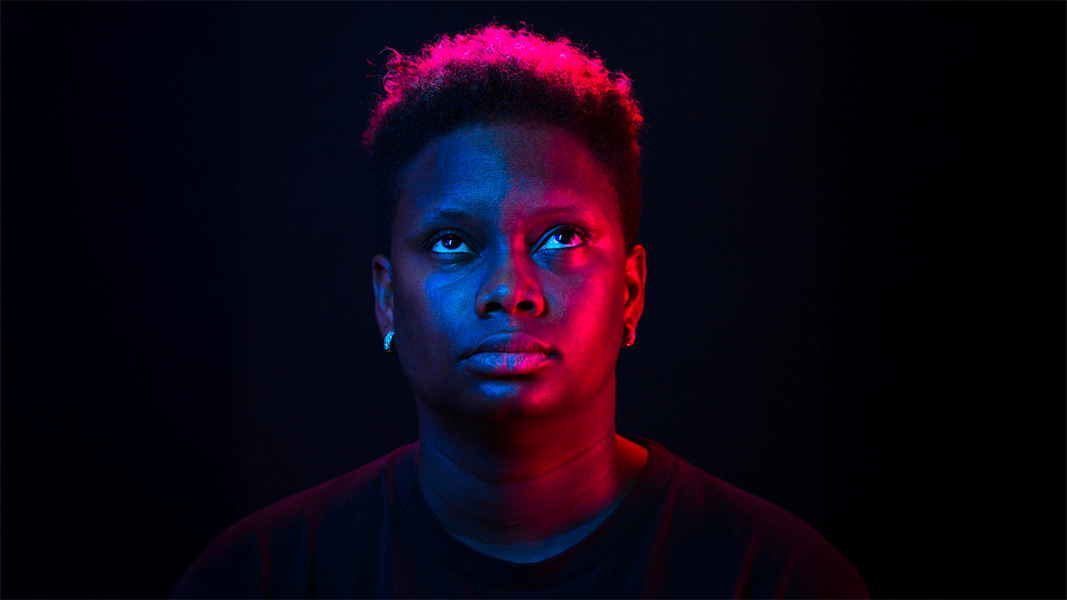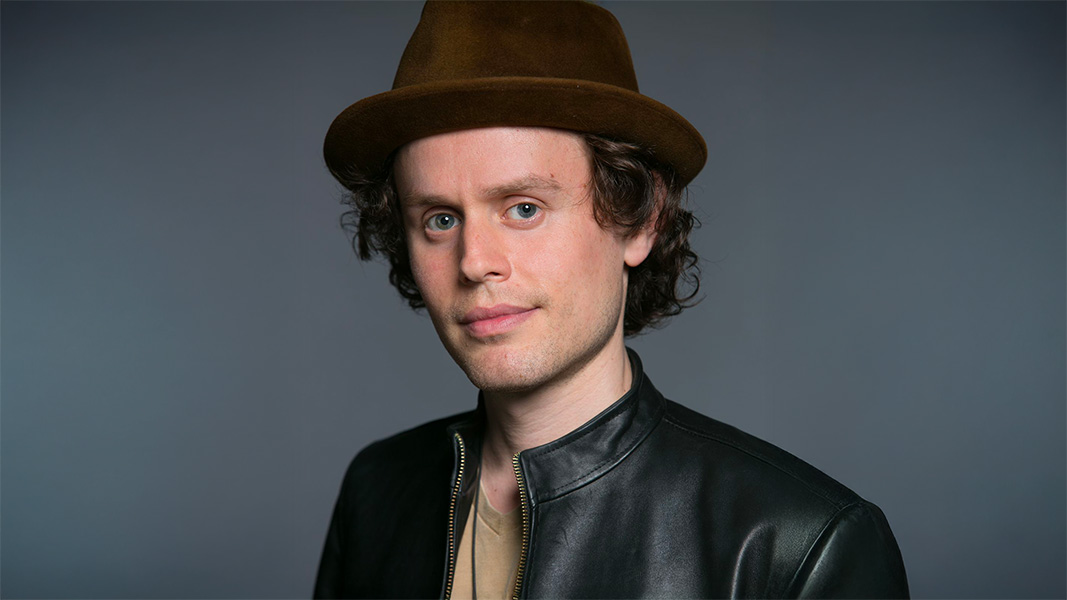We had the opportunity to chat with the Montreal based producer and live performer GROJ. His unique combination of rich design, compelling melodies and new wave vocal stylings have made him one of the underground’s most intriguing acts at the moment. He recently releases a new EP on Canadian imprint microCastle. Read the full interview below !
WWD : Hi Kevin, thanks for sitting with us today! Tell us, what does a studio day look like for you?
Well to be honest, I don’t actually work like that – a studio day feels too planned out for me. The trick that works for me is to run a convincing ordinary life, so that I always have experiences to draw from and stay connected with people’s reality. But as soon as I get an idea in my head, it develops like a rush. If I can I usually stop whatever I’m doing and run to the studio, otherwise I record the idea and get to it as soon as things free up a little. Then I usually spend 8-10 hours working on it non-stop until the track has taken shape. I might come back to it later and shape the initial rawness to a slightly more polished version. This helps me make my music feels like it has gone through a single coherent thought process.
WWD : What’s been on your to-do list this week?
A typical week is split in half between studying and making music. My PhD looks at how music affects us psychologically and how it changes our brains. My to-do lists are more for my studies, and I usually work around it when I get a decent music idea. I like switching between a creative and more scientific view on music. Both sides of my life interact a lot and feed off each other. I’m never sure whether music is there to serve science or if science is behind the music. I have now accepted that this question will never be resolved. I think there is something bigger we are not seeing yet.
WWD: Tell us more about your story. How did you discover electronic music and what led you down the path of wanting to be a producer, Dj and live act?
I had a pretty odd rock band experience in high-school and found it more fun having full control over the music process. I naturally started spending more time in my home studio working out my own arrangements than performing as a band. At first it was with cheap Casio keyboards, drum machines, I also had access to a Yamaha DX7. Then one day, I was 19 I think, one of my room-mates Moevalith, who is a techno producer, showed me Reason and Logic and the many more possibilities that exist today. I’ve always played music, I took piano lessons at the age of 6 – it’s just something I can’t stop doing. Being a live act is an important part of the music creation process. It forces me to think about music as something dynamic. I like to keep my ideas quite open, so they can be interpreted in different ways, maybe with a totally different set of instruments one day. For me live and studio time are two sides of the same coin, I imagine what I could do live when I’m working on a studio version.
WWD: You have a unique artist name? Is there a story behind it and how did you end up settling on GROJ?
Not really. I like how it is an unknown word, its meaning takes shape from the music. Since it’s not a familiar word, it is hard to tell just from the name what the music will sound like. When people come see me play, they don’t always know what I will play, so they come with different expectations and I think this sets a particular mood – there is more intrigue from the get go. Music is a powerful in how it can surprise you, it is one of those few things in life that has the power to send chills down your spine.
WWD: You have a new EP on microCastle — ‘BUNK UP’ including a remix from Clarian. Tell us a bit about the EP and how it showcases your individualities. And how do you feel about your work being remixed in general?
The tracks on this EP were made in the same month. The same creative impulse runs through all three tracks. I was in a very excited and inspired phase, I had discovered some new synths and learnt new studio tricks. I was also glad that polyrhythms finally started becoming something acceptable to play in a club. Back in 2011, Blokc and I released a track called Erhap with 3 overlapping polyrhythms. I remember we played it at Igloofest in 2013 and half the crowd was standing still thinking we were train-wrecking. It was a sad day for us, so I’m thrilled it was just a matter of time. For this EP, I felt like I didn’t make any compromises, I wasn’t trying to get somewhere, whatever was going through my head was put on tape and stayed true to its original intentions. I think Clarian got that and engaged in the remix in a similar way, without compromise and by expressing his own personal world freely. That’s usually how I prefer musicians to approach remixing my tracks, I like it if the music made them feel confident to take risks.
WWD: We’re very excited to share the full premiere of the title track ‘Bunk Up’. Can you share with us where your head was at as you were putting the track together?
When I made ‘Bunk Up’ I was quite nostalgic about the feeling you get when you’re young and you meet someone, still quite naïve and carefree. That’s how I felt when I met my girlfriend, usually that feeling is fleeting but when it clicks even after, revisiting those memories gets very addictive. So, I would say much of the lyrics here were drawn from my own experiences. I thought that the feeling of young lust was very well captured by some Dance tracks of the 90’s, so I don’t know if that comes off in the track, to me the harmonic arrangement has that same vibe, but with a more mature futuristic sounding beat than a classic 909 drum machine pattern.
WWD: Is that a typical process for you or is every track a different journey in terms of the creative process?
Every track is a journey. I never use presets, or templates and try to hear the music in my head beforehand as much as possible. During the first 5-6 years of my career this made me a very slow producer, but now I’m quite fast and fluid. I never know what music is going to come out, every track feels like something precious that will only ever happen once and I try to treat it that way.
WWD: What made microcastle the ideal home for this EP?
Since these tracks are slightly more “outside the box”, we were very happy that microcastle felt like they could take on distributing and promoting them in a strong and unique way. I’m also happy that it’s a Canadian affair and Mitch, the label owner, puts a lot of heart into everything related to the release, that makes a big difference.
WWD: You have also been member of the Hosh’s fryhide family for a while now – how did it all begin and what is it like to be part of such a tightly knit group.
I was very lucky and had a good management team, I was in the right place at the right time. HOSH was playing in Toronto I think, and my manager managed to convince him to fly to Montreal during the week and stay a few nights at Tone Depth’s chalet in the north. We all hung out there and exchanged music, food and stories. The feeling in the air was right, trust came naturally, and we knew we were all going to benefit from working with each other. We had the desire to help develop a new musical vision in a comfortable family-like atmosphere, ideal for providing constructive criticism. For me those group dynamics are the basic ingredients for making authentic far-reaching music. There is a collective review process for tracks, which is great because I easily drift off into my own world. It keeps me connected to concrete reality. It’s nice because on the label there is potential for new-comers, and they are paired with established artists. Sometimes I do feel like I am making a track for fryhide, and sometimes I feel like I’m just making what I hear, and that’s the one that might end up on fryhide – It’s always a bit of an adventure. The label has shown strong beginnings, it now has a lot of influence and aims to make music that will last in time. It’s exciting to be on board a label like that which pushes boundaries, it doesn’t really conform that much to what is happening in the scene – it has its own identity.
WWD : You are one of the few electronic artists who plays live and also sings during the performance, tell us about your live setup and is this something you prefer to DJing? Or is DJing something you primarily reserve for podcasts and such?
My live set-up depends a lot on the venue and the type of crowd since some of my tracks are more accessible than others. The more intimate and familiar the dancefloor is, the more I might bring along a few external analog machines and take more risks. With more high profile and mainstream shows I stick closer to the formula. At one type of event, making and keeping the connection with the crowd might require being more experimental and open-ended, while in other cases the tracks need to be played out in a more clear-cut, structured and powerful way. Performing a live set and singing to it requires a lot of energy, and I’m still exploring how best to manage both the singing and instruments while keeping in mind that showmanship is also important. I think a live set is a chance to show the more personal side of music and to bring people closer to my personal world. With DJ sets, being able to combine two or three tracks at the same time offers a wide range of creative possibilities, lets me be more flexible and to follow more the energy of the crowd. I love both, they are different and complementary.
WWD: When you were finding your way and finding your sound at what point did you know you wanted to perform live rather than being DJ for the most part?
I often feel like music is an idea more than anything else. A powerful melody or musical arrangement can be interpreted and played in many different ways. When I finalize a mix of a track for a release, I’m always a little frustrated about the decisions I make since the focus is on making something that can stand the test of time. Live performance gives me a chance to show different ways in which the same musical idea can be played out to different effects. I have always put forward live performance because I like the feeling of creating music in the moment. With DJ sets you know where the track is going to go, you’re always planning ahead a little – during a live set it’s about decomposing time in your mind and creating the milliseconds that are passing by in an extremely alert state.
WWD : How has living in Montreal shaped your sound and career and who are some up and coming Montreal based artists to look out for?
I have a French and Anglo background, so in Montreal both languages are actively used all the time. Being here helps me feel whole, both cultures are being stimulated. I think it helps to progressively sharpen my broader understanding of things and to stay open-minded. Montreal is great because there is a lot going on culturally. It’s a great for pooling resources with other artists, as well as sharing and testing ideas.
The Montreal scene was largely tainted by the success of indie rock, with bands like Arcade Fire, Wolf Parade and God Speed You Black Emperor in the early 2000s. I think this also paralyzed the scene a little here. Electronic dance music was doing its own Richie Hawtin-inspired minimal sound separately from the rock scene. Then came a turning point. It happened when people still felt like they wanted to lose themselves further and dance the night away after a rock show. I am a fan of indie rock and loved going to obscure intimate shows, especially at a place called The Plant. One day they started asking techno DJs to play after some rock shows. I was lucky to be a one of them and remember some very wild things happening that DJs are not used to. By 4AM people would be rolling on the ground topless and throwing pillows at each other, it was the spirit of punk at a techno show. I think that was the time when both parties saw how they could co-exist and mutually benefit from one another. As a result, now more of the indie rockers I know also play a live analog techno show under a separate name (I can think of Slight and Anabasine). A lot more interbreeding takes place now between genres and this has made the independent music scene unified, liberating and inspiring. You never feel like you can’t be yourself and you are pushed to be bold and to stay real.
There are a lot of up and coming acts now it is hard to keep up; browsing through the MUTEK catalogue is a good place to start. An obvious choice is Tone Depth, also Ohm Hourani has just put together a very interesting album called “Jazz of the Machine”, keep an eye out for that.
WWD: How much of an influence does music outside of the electronic spectrum have on you?
A lot. The core of my inspiration comes from non-electronic musicians that I have a connection with. I rarely refer to electronic music, if not just to stay in the loop of what’s new and to use as references for the more technical aspects of engineering music. I like to mix genres, I think genres are endlessly rich and if you break down their complexities, you can come up with things that suit the present times better. I think the spirit of Punk and New-wave is in me in its own way. Those genres showed us that things can go a long way even if you are a shy person and have close to nothing. Krautrock is great too, especially Cluster, Harmonia and Neu. For me Krautrock is the backbone of the third generation’s quirky hypnotic techno trance that is trendy again now.
WWD: Most artists go through periods of creative blocks, what do you do to help break through these moments?
I have been very fortunate so far, I haven’t experienced any long creative blocks. I think the key is to listen to yourself and respect yourself. If the magic isn’t there anymore, it’s totally normal and nothing to panic about. I just go about life as if music never existed. I blatantly ignore it. One day it might call on me again and draw me back under its influence, or it might not. Then I think you also just need to go live experiences, a creative block is a good time to open up to what other artists are doing, to let yourself get influenced by others, knowing that whatever music you make during that period will sound very contrived.
WWD: What’s the thing most people think they understand about being an artist but don’t? And what are the biggest challenges you currently face as an artist?
It’s the death of an artist when confusion arises from taking too seriously what others think of you and your music. That being said, being too uncompromising can lead to being too “avant-garde” and missing out on the extraordinary experience that is translating musical ideas into something that touches people of your time. The one thing you need to embrace and master as an artist is the dance between integrity and connection. Another important dimension today is measuring how much classical training versus self-taught training is healthy in order to maintain a steady flow of cool ideas. I always encourage people to do the opposite of what they normally do as often as possible. This keeps an open-mind, widens the line of possibilities and makes it easier to break new ground. I often see my career as a never-ending learning experience progressing from more experimental, quirky solitary explorations to achieving a simple powerful stroke of flair with piercing energy that radiates with people. My ultimate goal is to keep pushing boundaries and break out more from the electronic dance music codes to something more accessible, without making too many concessions.
WWD : What is the one piece of advice you give now that you wished you could have gotten five years ago?
Don’t crush your confidence but try to always surround yourself with people who are better than you.
WWD : Looking back over your discography, which one of your very first tracks still puts a smile on your face when you listen to it now, and why?
I think its ‘Gnorphe’, there is something just so childish about it.
WWD : Current favorite track and why?
1979 – ‘Metro’, it’s so simple and effective.
WWD : Apart from music, what makes you happiest?
Spending time with loved ones, travelling and getting¬¬¬¬¬ lost in my train of thoughts.
WWD : Cheers for speaking to us today Groj !
